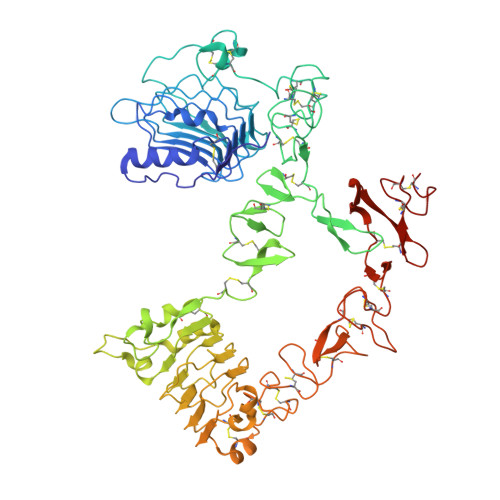Enzymatic Prenylation and Oxime Ligation for the Synthesis of Stable and Homogeneous Protein-Drug Conjugates for Targeted Therapy.
Lee, J., Choi, H., Yun, M., Kang, Y., Jung, J., Ryu, Y., Kim, T.Y., Cha, Y., Cho, H., Min, J., Chung, C., Kim, H.(2015) Angew Chem Int Ed Engl 54: 12020
- PubMed: 26315561
- DOI: https://doi.org/10.1002/anie.201505964
- Primary Citation of Related Structures:
4UIP - PubMed Abstract:
Targeted therapy based on protein-drug conjugates has attracted significant attention owing to its high efficacy and low side effects. However, efficient and stable drug conjugation to a protein binder remains a challenge. Herein, a chemoenzymatic method to generate highly stable and homogenous drug conjugates with high efficiency is presented. The approach comprises the insertion of the CaaX sequence at the C-terminal end of the protein binder, prenylation using farnesyltransferase, and drug conjugation through an oxime ligation reaction. MMAF and an EGFR-specific repebody are used as the antitumor agent and protein binder, respectively. The method enables the precisely controlled synthesis of repebody-drug conjugates with high yield and homogeneity. The utility of this approach is illustrated by the notable stability of the repebody-drug conjugates in human plasma, negligible off-target effects, and a remarkable antitumor activity in vivo. The present method can be widely used for generating highly homogeneous and stable PDCs for targeted therapy.
Organizational Affiliation:
Department of Biological Sciences, Korea Advanced Institute of Science and Technology (KAIST), Daejeon (Korea).

















